In his book, Leaders Eat Last, Simon Sinek explains the concept of the Circle of Safety: “Only when we feel we are in a ‘Circle of Safety’ will we pull together as a unified team, better able to survive and thrive regardless of the conditions outside.”
Sinek gets the title from the U.S. Marine Corps’ culture, where leaders are expected to eat last because they believe leaders should be willing to place the needs of others above themselves. These leaders truly care about others at the expense of their own self-interest.
In other words, they create a Circle of Safety.
When the circle is broken, group strength diminishes. If people are forced to manage dangers inside the organization, the organization is less able to face the dangers outside the organization. These inside dangers could include:
- A dog-eat-dog culture of workplace rivalries and silos
- Employees who are pitted against one another, seeing each other as competitors
- An organization that overtly prioritizes numbers above people
According to the Harvard Business Review, “Making sure that people feel safe on a deep level should be job #1 for leaders.” Truth be told, the entire Entrepreneurial Operating System (EOS) is designed to build trust among team members by creating alignment through the following principles:
- A shared vision
- Core values
- Organizational purpose
- Accountability and fairness
- Getting the right people in the right seats
How to Build a Circle of Safety
By creating a safe and trusting environment, leaders get the best out of people. Here are some practical ways to demonstrate the two top leadership characteristics that build a Circle of Safety—trust and empathy.
Share Knowledge and Information
Make sure to share the vision of the company and key metrics that indicate the organizations health. Celebrate the core values. Express your passion for the mission, and tie it to all the company’s major initiatives. Being part of something special activates generosity and team spirit!
Give People Autonomy
If an organization doesn’t trust its people, it will monitor and surveil them—whether micromanaging calendars or monitoring bathroom breaks and conversations. Set clear expectations and give people space to complete their responsibilities.
Ask for Feedback
Avoid disagreeing with the feedback that’s offered. Restate what was heard and thank the giver. Then show some openness to change and follow through.
Listen
Keep in the mind the 20/80 Rule—20% talking and 80% listening. Ask open-ended questions and seek clarification. Be present and make good eye contact.
Recognize Others
When people feel appreciated, they feel safe and relaxed—freeing up energy for productivity or innovation. The result is better retention and engagement!
Lead by Example
Put the needs of others first. Live the core values. Demonstrate the attributes that create a safe and trusting environment. As the leadership team goes, so does that rest of the organization!
By creating a circle of safety, leaders can create an environment, where people love the company and each other. And in return, people give their all to protect and advance the well-being of the organization.
So, where are your circles of safety, and where are your opportunities to create circles of safety? Consider these questions to get the best out of people!
If your actions inspire others to dream more, learn more, do more and become more, you are a leader.
– John Quincy Adams
Need Business Leadership Coaching?
Learn more about building a Circle of Safety, and how this impacts your business growth, strategy, and team culture development by scheduling a consultation with Chris Naylor, M.A., Expert EOS implementer, business coach, and speaker.
Send Chris a message to get in touch, and she’ll connect with you shortly.
